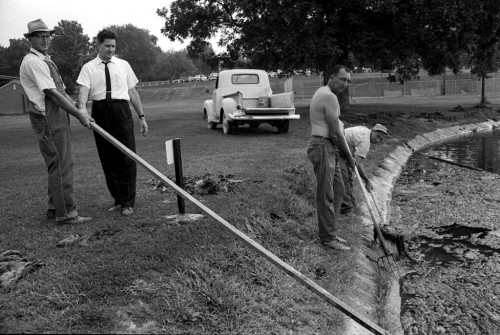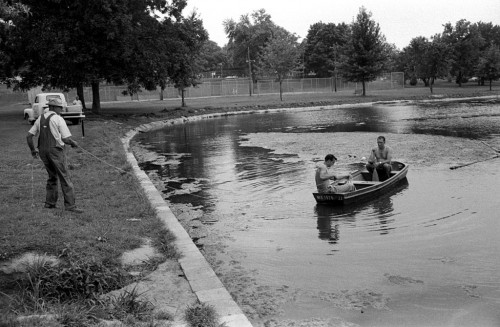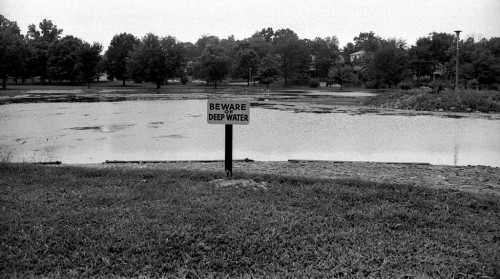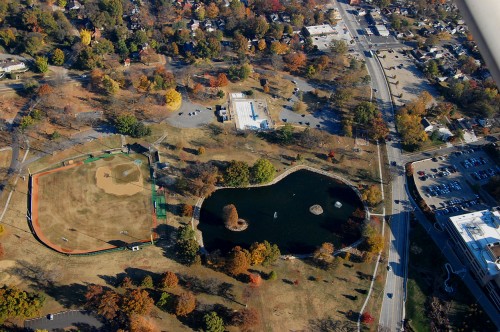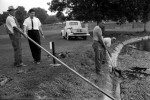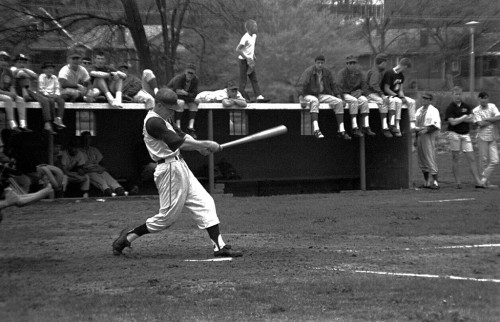 That’s the basic formula for a good sports photo: you should have the player’s number, his face, the ball and the action. Some of these photos from an unknown baseball game at Capaha park sometime in March 1966 (maybe) have at least some of the pieces of the puzzle. (Click on any photo to make it larger.)
That’s the basic formula for a good sports photo: you should have the player’s number, his face, the ball and the action. Some of these photos from an unknown baseball game at Capaha park sometime in March 1966 (maybe) have at least some of the pieces of the puzzle. (Click on any photo to make it larger.)
That’s easier said than done. Some shooters are better at it than others. I hired a kid named Allen Eyestone fresh out of Kansas who was one of the best sports photographers I’ve ever worked with. He had an uncanny ability to be just where the action was and to shoot images that were tack-sharp. Some of the guys went to sneaking up behind him and touching him with magnets to see if he was some form of robot.
How do you call what you can’t see?
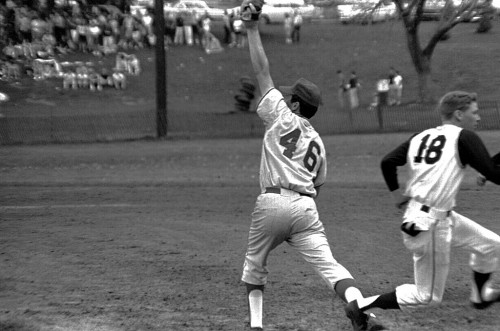 There were nights in Southern Ohio when the fog would come rolling down into the valleys so thick you couldn’t see from one side of the football field to the other. I don’t know how the officials could call a game they couldn’t see. You couldn’t use flash because the light would bounce off the fog and all you’d have would be a bright blob. When the game was over, you’d drive back home with the door open so you could guide yourself by the line painted down the center of the road. Those were the nights you were happy to bring back ANYTHING.
There were nights in Southern Ohio when the fog would come rolling down into the valleys so thick you couldn’t see from one side of the football field to the other. I don’t know how the officials could call a game they couldn’t see. You couldn’t use flash because the light would bounce off the fog and all you’d have would be a bright blob. When the game was over, you’d drive back home with the door open so you could guide yourself by the line painted down the center of the road. Those were the nights you were happy to bring back ANYTHING.
Push, push, push that film
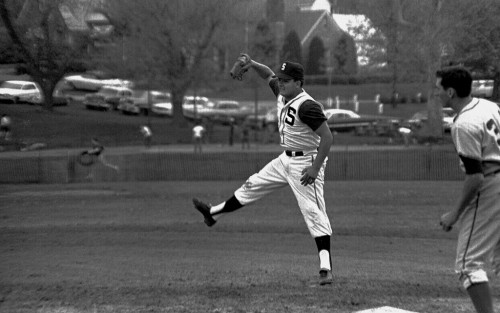 Shooting on fields so dark that the players should have had candles stuck on their helmets got me to experimenting with “pushing” film – using exotic films that I developed in the photographic equivalent of jet fuel to eke out as much speed as possible. In a day when the fastest normal film was 400 ASA, I would push mine to 3,600. Sometimes it would be grainy or contrasty, but it was the difference between a technically flawed photo or none. Sometimes it was pretty darned good.
Shooting on fields so dark that the players should have had candles stuck on their helmets got me to experimenting with “pushing” film – using exotic films that I developed in the photographic equivalent of jet fuel to eke out as much speed as possible. In a day when the fastest normal film was 400 ASA, I would push mine to 3,600. Sometimes it would be grainy or contrasty, but it was the difference between a technically flawed photo or none. Sometimes it was pretty darned good.
This last shot has the ball (stuck deep in his mitt), the player’s face, the action (caught in mid-air) and almost his number. I like the line of cars parked in the background and the kid running along the fence with what look like a tire in his hand.

